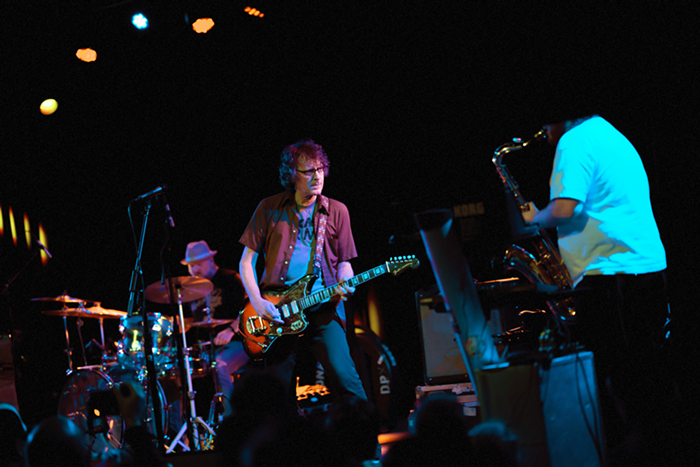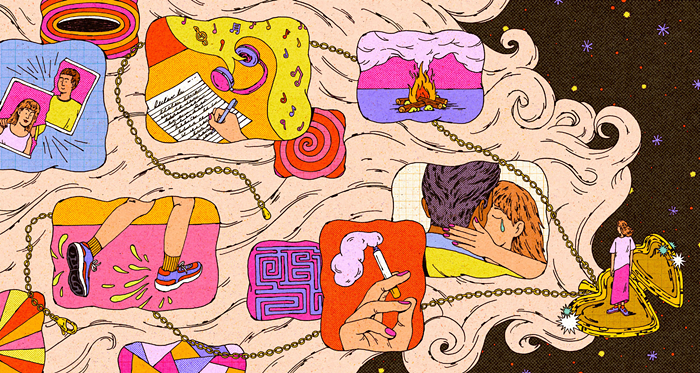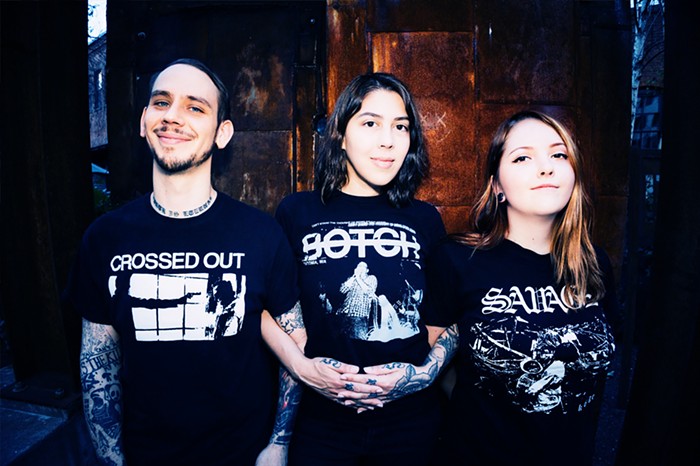In December, talk-radio station KQBZ (The Buzz) abruptly switched to a new country format renamed The Wolf. Fellow Entercom station KISW inherited two new, predominantly talk shows from KQBZ—Tom Leykis (10:00 p.m.–2:00 a.m.) and The Men's Room with Miles Montgomery and Steve Hill (during afternoon drive time). Station manager David Richards promised these changes would add a lot more personality to the "Rock of Seattle." Yeah, and a lot less rock.
Unfortunately this kind of audience shuffling is becoming par for the course. Prompted by Howard Stern's jump to Sirius (KISW is replacing him with area institution BJ Shea), Entercom's moves are just the latest in what could be a busy couple of years. The competition between traditional and on-demand media is getting fierce, and radio has finally awakened from its slumber.
Radio has struggled with anemic growth since advertising budgets contracted in the wake of the dot-com bubble's collapse in 2001. Last February, Clear Channel and CBS Radio reduced (or wrote down) the value of their holdings by a total of $15.9 billion. Meanwhile, the medium continues to hemorrhage listeners. (Arbitron reports radio listenership is off 13 percent in the last decade.) It's hard to imagine terrestrial radio—with near-total market penetration—disappearing, but between the iPod, streaming, satellite, and the promise of Wi-Fi, the medium's facing a challenge that dwarfs the one posed by television 50 years ago.
"There's been a general fragmentation in all media and there're more choices for entertainment than there ever has been, no matter what medium you're talking about," says Dave McDonald, senior vice president and market manager for CBS Radio Seattle. "That's resulted in a subconscious desire on some people's part for more variety than ever before."
That's one of the driving philosophies behind Jack (96.5 FM), a relatively new format that's been a rousing success since it supplanted the station's modern-rock format in April. It tops the coveted 25–54 age group in the latest ratings. McDonald describes Jack as an "anti-radio" format because of its broad, genre-spanning playlist of past hits and limited DJ banter.
"Jack apes the iPod on shuffle, where you don't know what's coming next. That really goes against format radio, which has very much a narrow, predictable kind of appeal," says radio consultant Fred Jacobs. "I run into a problem with it in the notion that people don't want personalities. You're certainly not going to get [personalities] from Jack. You're going to get that from The End or KISW or KZOK. It remains to be seen whether personality-free radio can sustain itself over the long haul."
Conventional wisdom suggests that most Jack-type stations have a shelf life of 12–18 months before their audiences begin to fade. Of course, noncommercial KEXP (previously KCMU) has championed both variety and personality for 20 years, which has made it one of the most distinctive and, now, popular stations in the country.
Since it started streaming six years ago, KEXP has cultivated a following across the globe. Before Arbitron shut down its online metric, MeasureCast, KEXP was ranked sixth among streaming stations in the country and was the number-one streaming terrestrial radio station. More than a third of donations during KEXP pledge drives comes from outside Washington State. The personality of the DJs—who program their own shows—is one of the keys to the station's success, according to program director Kevin Cole.
"Definitely having eclecticism flies in the face of traditional programming," Cole says. "But we not only champion the music and the artist, we champion the DJ here. We consider the DJ the curator and that's part of what makes KEXP special."
Streaming is just one of the ways in which KEXP has been ahead of the curve. The station also has a 14-day broadcast archive, an archive of in-studio performances, and an hour-long weekly podcast.
"We've become distribution agnostics—we don't care how you get KEXP," says executive director Tom Mara.
The big radio conglomerates are just starting to tap these new distribution media. Youth-skewing stations such as The Mountain and The End offer podcasts of their morning shows. Others have archived band interviews. In the next couple weeks, CBS Radio plans to begin streaming its five Seattle stations for the first time.
"We've wanted to do it for a long time," says McDonald. "The company is far more progressive at the top than it's ever been with regard to understanding it's a million-channel world—or is about to be with all the options."
Radio's tendency to ignore the very young and very old (those over 50 are the largest audience for satellite radio) may already have doomed it with the coming generation for whom radio is like the phonograph. According to Jerry Del Colliano, professor of music industry at USC's Thornton School of Music, the internet's interactivity (think MySpace and instant messaging) is far more integral to this new generation's identity than cold media like television or radio.
"I don't care if terrestrial radio stands on its head, it's not where the kids will go," says Del Colliano. "Do [you expect young listeners to] give up these virtual communities, this back-and-forth communication, for radio—[which] you can't program and you can't get what you want, when you want it (a hallmark of this generation)?"
A study commissioned by USC found that 85 percent of those aged 12–24 preferred MP3s to terrestrial radio, though at least half listen to internet radio, and a third of those spend at least an hour a day listening. Even with the iPod, people still need ways to discover and vet new music.
"People look to the media as filters," says Ben London, executive director of the Pacific Northwest Chapter of the Recording Academy. "Not everyone has the time to search through the bins and the millions of records."
Radio's traditionally had that role, but it lost a lot of its personality and luster during the '90s, in the wake of consolidation.
"[Radio stations] are waking up to the need to do formats that have some kind of local presence and cut back on the spot loads. The question is how quickly they can turn it around. They've got as much time as it takes broadband devices to make it to the car to figure out how to have a product good enough that it will port over," says iN3 radio consultant Robert Unmacht. "There'll be a place for distinctive content. But if you're Jack #47?"
editor@thestranger.com

















